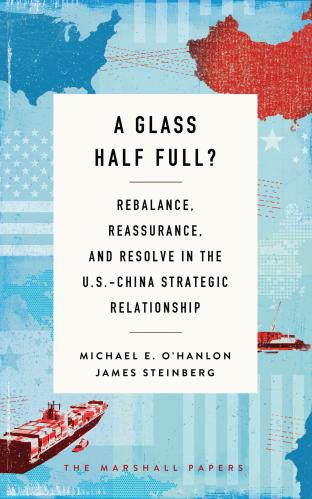During his tenure as 10th vice chairman of the Joint Chiefs of Staff, General Paul J. Selva has played a central role in helping the U.S. military harness new technologies that will shape the wars of the future. He has warned that China’s accelerating pace of modernization could outpace the U.S. military’s edge in key warfighting areas, while Russia’s efforts to offset NATO’s advantages in Europe could limit the alliance’s ability to deter aggression by Moscow.
On June 28, the Brookings Institution hosted General Selva for a conversation on the future of defense technology and strategy with Senior Fellow Michael O’Hanlon.
O’Hanlon asked Selva to assess the Pentagon’s pace in developing and acquiring capabilities. Selva said it hasn’t been fast enough: While “this is not a judgment on the allocation of the budget or the effort, it’s a judgment on the cultural changes required to take advantage of the speed of change that is happening in the technology sector.” Long gone are the days when the U.S. government provided most of the capital for defense research and development—today, the private sector leads the Pentagon by a 10-to-1 ratio, he said. Selva cautioned that China and Russia will continue to compete with the United States in a myriad of warfighting areas.
To frame the rest of their conversation, O’Hanlon raised a number of technology “dyads.” On the first, satellites and space launch vehicles, Selva said that “satellites are becoming smaller, so miniaturization is key to them. But it is not just miniaturization; it is integration and the capacity to make a small satellite that can do multiple things.”
Progress on the second dyad, missiles and missile defenses, has been uneven. O’Hanlon said that missile defense has not made enough progress, while Selva pointed out that “the missile defense game is about responding to changes in your adversaries’ behavior,” giving offensive missile capabilities an upper hand against even the most mature hit-to-kill technology. Selva added: “I liken this to ‘what’s more fruitful? Killing the arrow, or killing the archer?’ I view missile defense as an end-to-end solution. It’s our obligation to think about, ‘What are the things that empower your opponents’ offensive capacity?’”
In O’Hanlon’s next dyad, cyber offense and cyber defense, Selva explained:
Operating at machine speed matters, because if you can’t defend all of the subsystems on a particular weapons system or a particular command and control network, you have to build a system around it, almost like the layers of an onion…and those layers must operate at a fast enough speed to detect intruders. Humans are not very good at this.
Selva underscored the Pentagon’s challenge with cyber defense by pointing out that the United States must maintain the cyber security of both the newest tanker in the world, the KC-46, as well as the KC-135, which was first designed in 1955.
On the next dyad of stealth and counter-stealth, Selva explained:
The value of stealth isn’t that it makes the airplane invisible, it is that it gives you an advantage over your adversary’s detection and targeting systems, not dissimilar to quieting in submarines. If it’s a competition between two submarines, the quieter submarine with the better trained crew will always win. It’s not true that the quieter submarine with an inferior crew has an advantage over the noisier submarine if the crew is better trained.
O’Hanlon’s final dyad was AI and robotics. On AI, Selva said “the current state of AI is not adaptable…to a condition where all the variables are changing at the same time. But there are some places where we are seeing developments that are quite helpful.” He went on to say that “we’re not in the position right now of developing robots that go out and completely autonomously do tasks without human intervention. And I’m convinced that we have to have a very deep conversation about when we get there.”
Asked how evolving technology and strategic conditions have shaped military strategy, Selva pointed to logistics. “In most of our past war plans, logistics were an assumption. That is no longer true. In most of our war plans, there was an assumption that we could have significant indications and warning of a potential competitor’s behavior. We have shortened those timelines.” This in turn has helped to bolster U.S. deterrence, he argued.
Selva continued:
In deterrence, your adversary not only has to believe you have the capacity, but you have the will to resist whatever they want you to do, and that they can’t win. In lining up all of the things that are necessary to deter an adversary or prevent miscalculation when you are deep in competition, you actually have to clearly signal your intentions. And the extent that we obscure those intentions by burying them in assumptions and war plans, we don’t actually prepare ourselves for the right outcome. If all else fails, we will go to war.





Commentary
The future of US defense strategy: A conversation with General Paul J. Selva
July 2, 2019